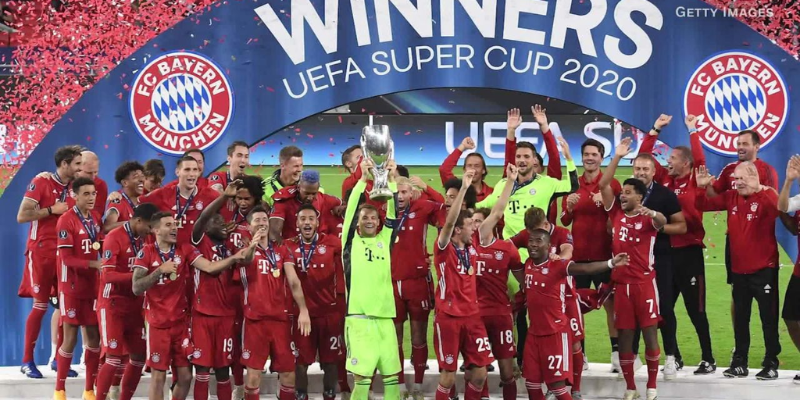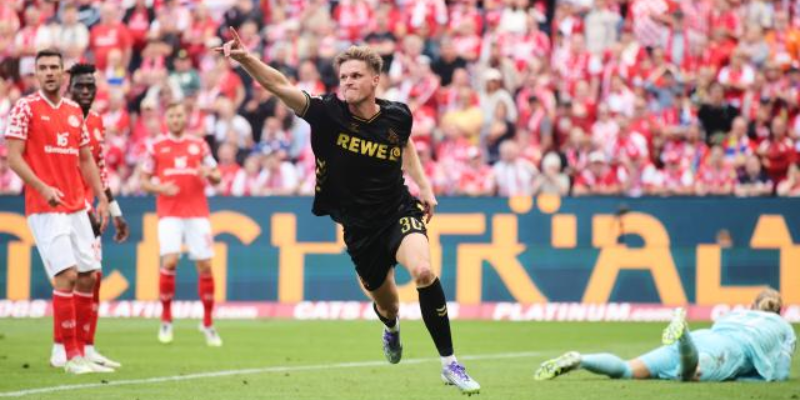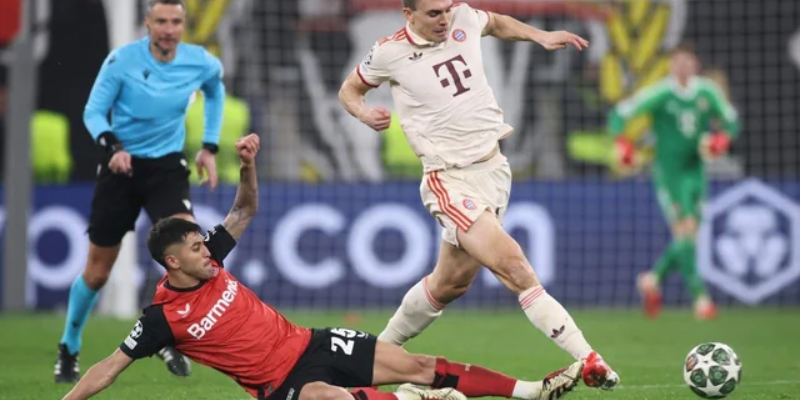The Bundesliga is underrated—and if you’re a football fan who mostly follows the Premier League, La Liga, or Serie A, you might be underestimating what German football offers. Bundesliga combines financial stability, youth development, fierce atmospheres, attractive style, and strong attendance, yet it rarely gets the credit it deserves. In this article, HartGoal will dig into the reasons why the Bundesliga remains one of the most compelling, yet overlooked top leagues in world football.
What makes Bundesliga consistently strong yet underrecognized

Here are some of the core features that contribute to the league’s strength—and also explain why many outside observers don’t appreciate it fully.
Financial stability and sustainable business model
- German clubs are much more conservative with their spending than many in other major European leagues. Many clubs avoid excessive debt; the league has strict licensing rules that monitor finances and enforce limits. This prevents wild overspending and sudden financial collapse.
- In the 2022-23 season, Bundesliga and Bundesliga 2 combined generated over €5.24 billion in revenue, a record high. A majority of clubs returned to profitability after pandemic losses. Match-day, media, and sponsorship income all rose.
- Ticket prices in Germany remain more accessible than in some other top leagues. Standing terraces and affordable seats make attending games more feasible for many fans. This ensures passionate crowds without breaking the bank.crowds without breaking the bank.
Attendance, atmosphere, and fan culture

- Bundesliga often leads Europe in average attendance. For the 2023-24 season, Bundesliga matches averaged around 39,500 fans per game, which is among the highest in global football.
- Iconic stadiums and devoted supporter culture—e.g., Borussia Dortmund’s Signal Iduna Park—create atmospheres in Germany that many fans say rival or exceed those in the UK, Spain, or Italy.
- Uniform fan engagementn smaller clubs draw large crowds, reflecting deep communal ties. This contrasts with some leagues where only the top clubs pull big gate numbers.
Youth development and pipeline of talent
- German football has invested heavily in youth academies. Clubs are required to have advanced academy systems and to maintain infrastructures that help identify and nurture local talent.
- Young players in the Bundesliga often receive real opportunities in the first team. Because the financial rewards.
- Examples: players like Jamal Musiala, Erling Haaland (before moving to Manchester City), and others made waves early in Bundesliga. These success stories keep drawing global attention, though sometimes after the rest of the world has already “discovered” them.
Competitive balance and surprisesWhile Bayern Munich has been dominant historically, recent seasons have seen more challengers. Bayer Leverkusen taking the 2023-24 title is a case in point.
- Relegation battles in Bundesliga are intense, and even mid-table clubs often push for European places. The gap (historical or financial) between the top and bottom might be wider than in some leagues, but upsets and unexpected results happen regularly.
- Game styles tend to be open and attacking. Fans usually see more goals, more aggressive pressing, and lively tactical battles, which makes for entertaining matches.
Strong European and international performance
- Bundesliga clubs frequently compete well in European competitions. While perhaps not always winning the Champions League, German teams are very often in the latter stages and produce standout performances.
- National squad performance also reflects the quality of the domestic league. Germany’s national team has drawn heavily from Bundesliga-trained players, and even foreign talent sharpened their skills in Germany’s system.
Why many still undervalue the Bundesliga

Despite its strengths, several perceptions (some fair, some misguided) lead people to undervalue the Bundesliga.
Star power & marquee names
- One reason is simply visibility: many football fans outside Germany follow leagues where the biggest global superstars play (e.g. in England or Spain). The Bundesliga has some big names, but fewer compared to those other leagues.
- Media coverage internationally is often lower, especially for matches not involving Bayern Munich, Borussia Dortmund, or RB Leipzig. This leads to less exposure to the league’s quality overall.
Rural stereotype: “Bayern or bust”
- Long dominance by Bayern Munich has led some to assume predictability: that the title race is already decided, reducing perceived drama. But this is changing with better challengers rising.
- Some critics point to occasional lack of depth in clubs’ ability to invest compared to Premier League giants or Spanish giants. While Bundesliga clubs are often more prudent, that sometimes means they are slower to spend and less flashy.
Broadcasting & commercial visibility
- The Bundesliga’s international broadcast deals are not as expansive or lucrative as some rivals. That means fewer matches are shown in certain markets, reducing reach.
- Commercial branding (merchandising, global tours, marketing) sometimes lags behind leagues that have aggressively expanded overseas presence.
Misconceptions about style or “physicality”
- Some fans believe Bundesliga is “weaker defensively” or that it suffers.
- Others assume smaller budgets mean lower quality. But many German clubs punch above their weight due to excellent coaching, tactical innovation, and youth.
Fresh evidence: how Bundesliga is rising in 2025
Let’s bring in the newest updates to show how the league is pushing back against its underrated reputation.
- In the 2023-24 and 2024-25 seasons, Bundesliga set new records in revenue, attendance, and commercial income.
- The 2024-25 season saw around 11.8 to 12 million tickets sold so far; average attendances.
- Top scorer stats, goal tallies, big wins continue: 2023-24 saw 985 total goals over 306 matches—nearly 3.2 goals.
- Clubs like Bayer Leverkusen breaking Bayern’s monopoly, plus strong European runs, are improving perceived competitiveness.
What Bundesliga could do (and already is doing) to get more recognition
- Further invest in broadcasting partnerships globally, especially in markets where the Bundesliga is under-watched.
- Promote star players and homegrown talents to tell stories: emotional arcs (e.g. youth rising, overcoming odds) help fan engagement.
- Maintain financial discipline but also enable clubs to grab more marquee talents where possible, to draw international attention.
- Improve branding and outreach: more international friendlies, more social media content, more multilingual commentary, etc.
Conclusion
Why Bundesliga is underrated is because it excels in many areas that matter—sustainability, youth development, fan culture, competitive matches—but often lacks the same flash, global branding, and star profile of some rivals. HartGoal has shown you that this league isn’t second-rate; it’s just underappreciated.
If you’re tired of knee-jerk judgments, it’s time to watch more Bundesliga matches, follow its rising stars, and spread the word. Bookmark HartGoal for match reviews, player stats, and fresh analysis—experience for yourself why Bundesliga is underrated.






